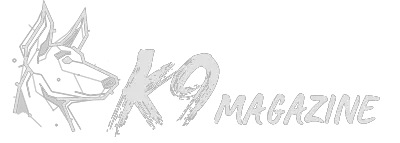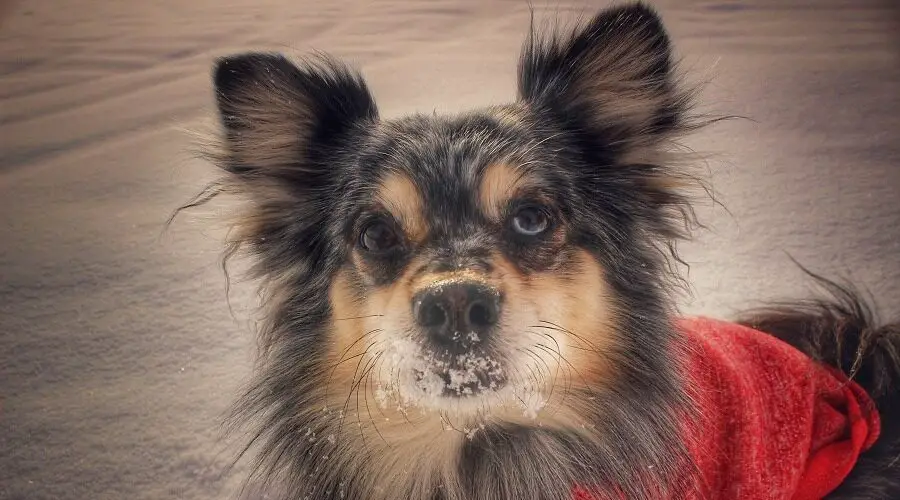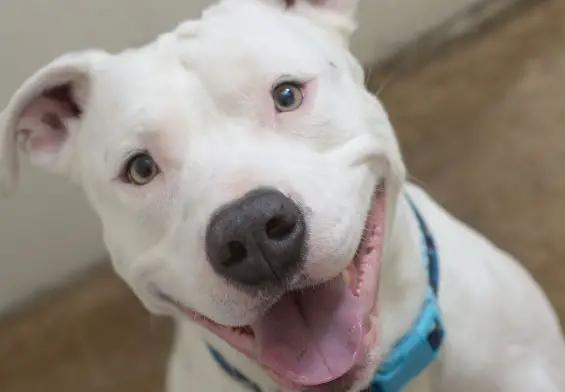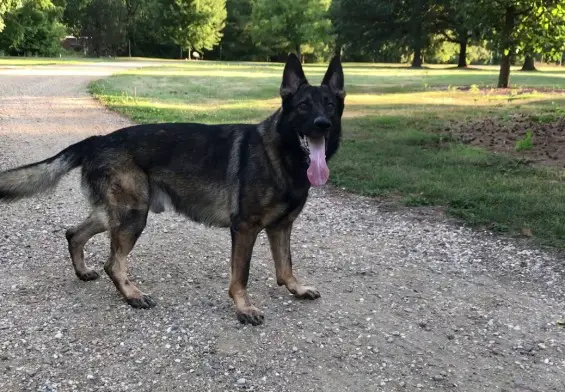Pomeranian German Shepherd Hybrid Cross Mix Dog Breed Guide
The two-parent breeds that make up the German Pomeranian are opposite to each other in almost everything. However, the mix itself blends the qualities of both parents to make it a desirable dog.
It falls under the class of medium-sized dogs. It has a unique curled tail and long hair, which is not typical of German Shepherds. This article will show the traits the mix inherits and how they make it a better dog.
They usually have a ruff around the neck, which is yet another trait common in Pomeranians. They have dark eyes that stand out from the moment you lay your eyes on them. They are loyal and excellent companions.
Both the German Shepherd and Pomeranian are working dogs. They are preferred by people with active lifestyles who may occasionally enlist their dogs’ help in doing work around the house. The German Pomeranian inherits these qualities and is as active as its parents.
German Shepherd
German Shepherds come from Germany. They are descendants of herding dogs that lived in three regions. One of these regions is the Thuringian region, which is home to the first German Shepherd to be registered.
A former army man named Max von Stephanitz registered his German Shepherd named Horand von Grafrath in 1899 and began breeding German Shepherds since then. The breed became popular because of its ability to work and guard.
It was recognized over a decade later by the American Kennel Club.
Pomeranian
It is usually called Pom in short. It descended from a German Spitz, a large working dog popular in the eighteenth century. The name means, around the sea and it comes from regions around the Baltic Sea in Germany and Poland.
They started as working dogs and would grow to weigh about thirty pounds. They were mainly used as sleigh dogs and guarding livestock and property. Later, the English developed a smaller Spitz, which is recognized today as the Pomeranian.
In 1888, the Pomeranian was recognized by the American Kennel Club.
German Pomeranian
How and when the mix came to exist is still unclear. People have only guessed why, but even that is not completely accurate. The two breeds may have been bred to produce a healthier dog, or it was purely about increasing the size, or people wanted a fierce guard dog.
It is speculated to have its origins in America in the nineties. Therefore, we will look at the traits the mix inherits and how they affect the outcome of the German Pomeranian. The physical traits of the dog that are inheritable include size, body shape, and color.
Physical Characteristics
The mix gets the features from both parents. Each one, as stated earlier, is unique from the other. So, let us see each’s characteristics and then discuss how they blend in the German Pomeranian.
German Shepherd
They are usually classified, starting from medium to large-sized dogs. The females are typically smaller. They can grow to a height of twenty-four inches and weigh from forty-eight to seventy pounds depending on their care and health.
Males could grow taller than the females by two inches to stand at twenty-six inches. They are also heavier and more masculine, weighing about ninety or ninety-five and anywhere in between. German Shepherds always have a longer silhouette regardless of their size.
They have a bushy tail that stays low and upright ears that make them look alert always. Their topline is sloping and is highlighted by the show lines. Their eyes have a deep dark shade, and their muzzle is square-like.
They have heavy double coats that protect them from the cold. They were once called Alsatians because of this feature. The hairs on the coats are short or medium, and it covers thick fur that is dense throughout their bodies.
The recognizable colors for German Shepherds are black, tan, red, sable, or a mixture of two or more of these colors. Some colors, like blue and liver, are rare and are not widely accepted. White Shepherds are not allowed by the American Kennel Club.
There is one color that is unique from all the others and is called the Panda German Shepherd. It started in a family with a rare mutation that causes the dog’s coat to be white and black. Almost thirty-five percent of their coat is white, so they cannot be showcased in the AKC events.
Pomeranian
They are not as tall as German Shepherds. They grow to a height of seven to twelve inches and weigh about eight pounds. All Spitz dogs have a wedge-like head. They have upright ears like the Shepherds and a thick double coat.
Another discernable difference between the Pomeranian and the German Shepherd is their tails’ position, which is usually above the back. Their body takes a square shape, unlike the Shepherd.
They can have a wide range of colors. They can be brown, lavender, cream, black, blue, orange, sable, brindle, tan, white, merle, and others.
German Pomeranian
The mix is a medium-sized dog and resembles the arctic Pomeranians. They can weigh from thirty to forty-five pounds depending on the care you give them and their overall health. They can get to a height of fifteen inches thanks to the Shepherd genes.
Their ears are medium-sized and upright, like in both parent breeds. Their eyes are large, and their brow is a bit domed. They have long strides and carry their tail over the back, or they are a bit curved.
They can take any of these colors: black, tan, brown, cream, fawn, sable, and white. The range of colors comes from both parents, so their color depends on their parents’ coats.
Grooming
The German Shepherd and Pomeranian shed, but the shedding is moderate. They have dense coats that require proper attention to maintain their look and cleanliness. The shedding can be intense during the changing of seasons.
In German Shepherds, the undercoat is usually dense, and this shields them from ultraviolet rays. It is also useful in warm temperatures because it insulates the dog’s skin. Also, only long-haired Shepherds are prone to matting, so brushing most of the others is easy.
Those with long hairs and thick undercoats need a de-tangler to untangle their hairs. Otherwise, the process will be difficult. You can also begin by using a de-shedder on their undercoat, then a pin brush to straighten whatever is left, and finally a soft bristle brush for the last brush.
Shepherds need brushing twice a week and a bath. However, a lot of shampoos may irritate their skin, so you should be careful.
The Pomeranians are prone to matting thanks to their long coats and the soft and dense undercoat. Frequent brushing keeps their coats neat. They also require baths after three or four weeks.
A steel brush is more effective with this breed’s coat. The coat protects them from water and above normal weather conditions. Some owners clip the hair short, but there are dangers associated with clipping the dog’s coat.
The mix takes on multiple traits from both parents, so some grooming methods that work on their parents also work for the German Pomeranian. They need frequent brushing of their coats like the purebred Pomeranian.
Most of the mixes have medium or long hair and thick undercoats. The grooming tools used for German Shepherds work well for the mixes. They also need to take a bath every couple of weeks, but the shampooing needs to be moderate.
The coats on the mixes are not as effective as on purebred German Shepherds, so they should not be trimmed down. Doing that could lead to serious complications, and it reduces the insulating power of the coat.
Other areas that require grooming include the ear, nails, and mouth. The ears should be cleaned regularly to minimize the risk of infection. The nails need to be trimmed every six weeks, and for oral hygiene, a veterinarian could advise you.
Exercise
German Shepherds have high energy requirements. Owners take them for walks and play with them to exhaust their energy reserves. They take at least two hours out of their day for exercise, including mental and physical challenges.
Despite being small in size, Pomeranians also have high energy requirements. They need almost ninety minutes daily dedicated to physical activity. Their energy has been likened to that of the Siberian Husky.
German Pomeranians need close to two hours every day to exercise. Young puppies need less activity, so the primary focus should be on socialization and other basic training. High-intensity activity for the big dogs usually does wonders for their health.
During exercise, you can give them mentally stimulating tasks to sharpen their minds. You can also continue their training on obedience to keep them in line.
German Pomeranians as Watchdogs
They are excellent guards who alert their owners of any suspicious thing. They get their alarmist nature from the Pomeranian side of their family. They can also be fierce when they inherit more traits from the German Shepherd side.
Health
German Shepherds can develop many health conditions, and unfortunately, some can be passed down to their offspring. The most common disorders are:
- Hip dysplasia.
It is more prevalent in large breeds and affects the joints of the dogs. This affects their movement and causes them pain.
- Degenerative myelopathy.
This condition affects the spine and the lower back in dogs. It affects the hind legs and compromises their mobility. In serious cases, it ends in paralysis.
- Hypothyroidism.
This condition begins with the thyroid gland failing to produce enough hormones. It affects the dog’s growth and overall health.
- Pannus.
It is an eye condition. A pink membrane grows over the cornea and causes inflammation.
Other conditions include diabetes, lupus, heart conditions, and epilepsy, among others. Most of the conditions can be identified with a test at the veterinary.
The breeders can also give information on how to handle the care of dogs that develop any of these conditions. Sometimes, owners forget that their designer dogs can develop problems that are separate from the inherited conditions.
The dogs should be taken for regular check-ups to ascertain their health status. Getting puppies from reputable breeders increases the chances of getting a healthier dog. It is different in rescuing, but even then, you can obtain a health certificate.
German Pomeranians are more likely to develop hypothyroidism, epilepsy, hip and elbow dysplasia, and skin allergies, among others. Healthy mixes can live up to fifteen years, which is almost similar to a purebred Pomeranian’s lifespan.
Personality
The German Pomeranian is a mix of two different dogs in terms of temperament. This fact makes it tougher to predict their behavior. However, if they lean on one parent’s side, most of their behavior will mimic that parent.
German shepherds are bold and brave. They can stand up to intruders and face threats without flinching. They are brilliant and focused dogs who approach tasks with confidence. If they are raised well, they become obedient and respectful.
Mixes that lean more toward the German Shepherd side have these same qualities. They always tend to bond with one person more than the others. This is because of their pack mentality and needing an alpha to follow.
Pomeranians are also brave and confident like the German Shepherd. The difference comes from their warm and inviting nature. They are comfortable around people and other animals and can become excellent companions.
Given that the German Shepherd can be menacing to children, Pomeranians are very welcoming to them. However, their size makes them susceptible to injury, and therefore, they should be keenly watched when interacting with them.
A mix between the two breeds can be expected to be warm but cautious. There is also no doubt about their bravery. They are obedient and excellent companions when socialized well.
Conclusion
A German Pomeranian can be the epitome of opposites attracting. The parents are fundamentally different. However, they share surprising similarities. The mix can be an excellent addition to the family because it is brave as a guard and warm as a pet.





